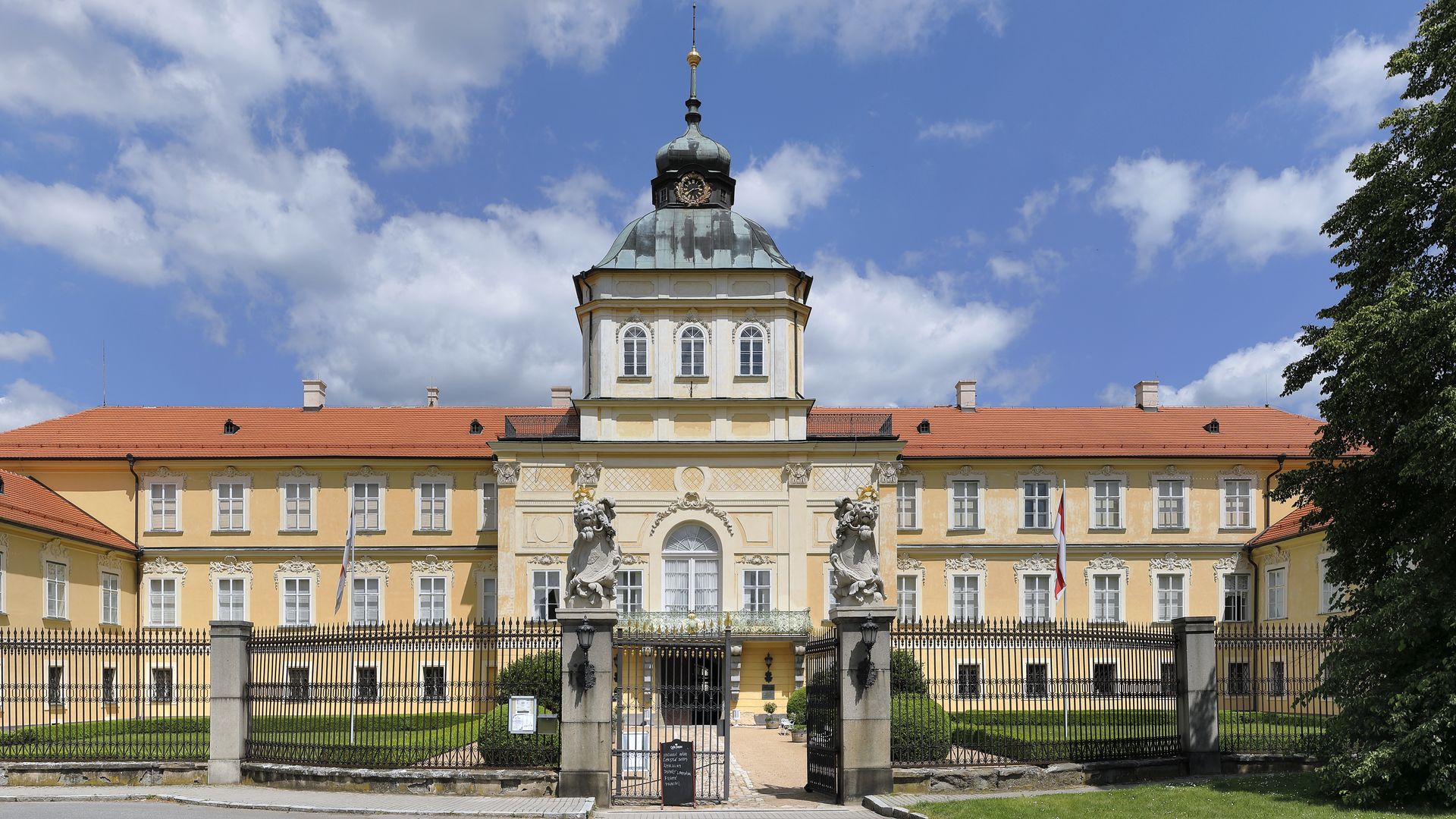Written by Petr Kominek

Horovice Chateau
The Horovice Chateau is a baroque-classicist residence in the town of Horovice in the Central Bohemian region.
Despite the lack of sources concerning its foundation and construction, this so-called new chateau is dated to the very end of the 17th century, as the detailed historical records of the Horovice domain only mention the old gothic castle of Horovice prior to 1648. In 1657, Jan Frantisek Bruntalsky of Vrbno married the daughter of Bernard Ignac of Martinic, and, after her death, married her younger sister in 1672. Through these marriages, the Silesian family of Bruntals of Vrbno acquired the lands in Horovice, and Jan Frantisek is assumed to have built the Horovice Chateau, due to the fact the old castle no longer suited the needs of representing nobility.
The French-style chateau park was designed in the 1730s, and the gates to the park were adorned with sculptures by the renowned sculptor Matyas Bernard Braun. The park was also decorated with a statue of Friedrich Wilhelm of Hanau by Heinrich Natter, which is, however, younger than the sculptures by Braun. The Bruntals of Vrbno used the chateau up until the second half of the 19th century when the last owner from this family Dominik sold it to Friedrich Wilhelm of Hanau, a Hessian elector, who purchased it as a present for his wife Gertrude. Their descendants still lived in the residence until the year 1945. The last owner of the Chateau, Jindrich of Schaumburg, joined the Wehrmacht in 1938 and after his capture in Tunisia in 1940 spent the rest of the war as a prisoner of war. His son, Leopold, stayed in Horovice with his mother and was imprisoned by the Gestapo.
After the war, the family was reunited in Austria, but they never returned to Horovice, as the Chateau was seized by the decree no. 7 issued by President Benes. Parts of the building were utilized as a hospital for two units of Red Army soldiers immediately after the war, who stole the “spoils of war” and damaged the property. After the departure of the soviet military assets, the estate was used as a post office, warehouse, offices for various state organizations and the school system under the management of the national committee for culture. From 1954 onward, parts of the chateau were being exhibited. It is currently a national cultural site with a stable exhibition under the management of the national heritage institute.
For more information about the Central Bohemia Region, from which this chateau comes, click here and here.